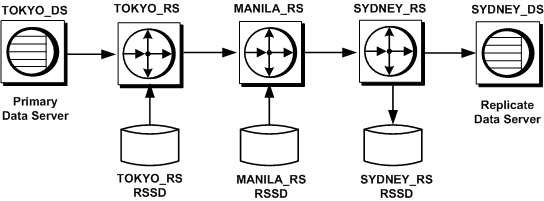Execute the alter route command with the save_interval parameter at the source Replication Server to set the save interval for a route.
alter route to MANILA_RS set save_interval to '60'
By default, save_interval is set to 0 (minutes). For systems with low volume, this may be an acceptable setting for recovery, since Replication Server does not delete messages immediately after receiving acknowledgment from destination servers. Rather, messages are deleted periodically in large chunks.
However, to accommodate the volume and activity of sites that receive distributions from the Replication Server and to increase the chance of full recovery from database or partition failures, you may want to change the save_interval setting.
In case of a partition failure on the stable queues, be sure your setting allows adequate time to restore your system. Consider also the size of the partitions that are allocated for backlogged messages. Partitions must be large enough to hold the extra messages.
Refer to the Replication Server Design Guide capacity planning guidelines for help in determining queue space requirements.
